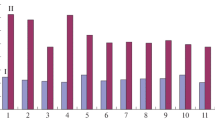Abstract
The production of anti-α-fetoprotein monoclonal antibodies for diagnostic use was carried out in a stirred tank fermenter equipped with a double membrane stirrer for bubble free aeration and continuous medium perfusion. A serum-free medium supplemented with 4 mM L-glutamine and 2.0 g/l glucose with a protein content of only 780 μg/ml was used for the production process. The harvested antibodies were concentrated 50-fold using a tangential ultrafiltration system and were then purified in a one step purification process by protein G affinity chromatography. The purity of the final product (90%) was controlled by SDS-polyacrylamide gel electrophoresis, gel exclusion chromatography and isoelectric focussing. For further quality controls of the product the immunoglobulin subclass and the isoelectric point were determined and the specificity of the purified mAb was tested by RIA using125I labelled α-fetoprotein.
1.87 g of purified monoclonal antibodies were produced (90% purity) within 2 weeks. It was found that the use of this type of stirred tank fermenter combined with a one step purification process using protein G affinity chromatography represents a suitable method for the fast production of medium scale quantities (500 mg−5 g) of monoclonal antibodies for diagnostic use.
Similar content being viewed by others
Abbreviations
- AFP:
-
α-Fetoprotein
- BSA:
-
bovine serum albumine
- FCS:
-
Fetal calf serum
- HRP:
-
horseradish peroxidase
- OPD:
-
o-phenylenediamine dihydrochloride
- I.P.:
-
isoelectric point
- IEF:
-
isoelectric focussing
- PBS:
-
Phosphate buffered saline
References
Birch JR and Cartwright T (1982) Environmental factors influencing the growth of animal cells in culture. J. Chem. Tech. Biotechnol. 33: 313–317.
Blasey HD (1990) Untersuchungen zur Optimierung eines Perfusionsreaktorsystems für die Kultivierung von Animalzellen. Thesis, University of Hannover, FRG.
Boot JHA, Geerts MEJ, de Groot ER, Aarden LA (1988) J. Immunol. Methods 106: 195–202.
Büntemeyer H, Bödeker BGD and Lehmann J. (1987) Membranestirrer-reactor for bubble-free aeration and per fusion. In: Spier RE and Griffiths JB, Modern Approaches to Animal Cell Technology, 411–419.
Chard T (1990) In: Burdon RH and Von Knippenberg (Eds), An Introduction to Radioimmunoassay and Related Techniques. 4th Edition, Vol VI, Part II.
Esser C and Radbruch A (1990) Annual Review Immunol. 8: 717–735.
Guss B, Eliasson M, Olsson A, Uhlen M, Frei AK, Jörnvall H, Flock JI and Lindberg M (1986) Structure of the IgG-binding regions of streptococcal protein G. EMBO Journal 5: 1567–1575.
Henkeshoven J and Dernick R (1985) Electrophoresis 6: 103–112.
Knazek RA, Gullins PM, Kohler PO and Dedrick RL (1972) Cell culture on artificial capillarites: an approach to tissue growth in vitro. Science 178: 65–66.
Köhler G and Milstein C (1975) Nature 256: 495. Lehmann J, Piehl GW and Schulz R (1987) Bubble free cell culture aeration with porous moving membranes. Develop. Biol. Standard. 66: 227–240.
Linn F and Sun AM (1980) Microencapsulated islets as bioartificial endocrine pancreas. Science 210: 908–910.
Lütkemeyer D, Büntemeyer H and Lehmann J (1990) Production of monoclonal antibody against gelsolin. In: Spier RE, Griffiths JB and Meignier B (Eds), Production of biologicals from animal cells in culture, European Society for Animal Cell Technology, The 10th Meeting.
Noll F (1984) In: Bergmeyer HV (Ed), Methods of Enzymatic Analysis, 3rd Edition, Vol VI, pp. 582–588, Verlag Chemie, Weinheim, Deerfield Beach, Florida, Basel.
Patterson Jr MK (1979) Methods of Enzymology 58: 141.
Raabo E, Terkildsen TC (1960) Scand. J. Clin. Lab. Invest. 12: 402.
Reuveny S, Velez D, Macmillan JD and Miller L (1986) Factors affecting cell growth and monoclonal antibody production in stirred reactors. J. Immunol. Methods 86: 53–59.
Schonberg J and Belfort G (1987) Enhanced nutrient transport in hollow fibre perfusion bioreactors: a theoretical analysis. Biotechnological Progress 3: 80–89.
Tolbert WR, Feder J and Kimes RC (1981) Large scale rotating filter perfusion system for high density growth of mammalian suspension cells.In Vitro 17: 885–890.
Author information
Authors and Affiliations
Rights and permissions
About this article
Cite this article
Zamboni, A., Giuntini, I., Gianesello, D. et al. Production of mouse monoclonal antibodies using a continuous cell culture fermenter and protein G affinity chromatography. Cytotechnology 16, 79–87 (1994). https://doi.org/10.1007/BF00754610
Received:
Accepted:
Issue Date:
DOI: https://doi.org/10.1007/BF00754610




